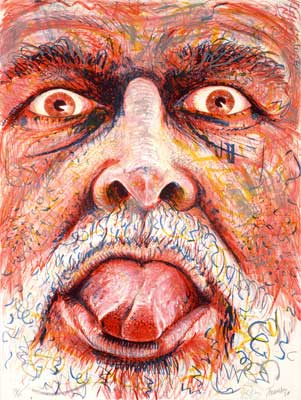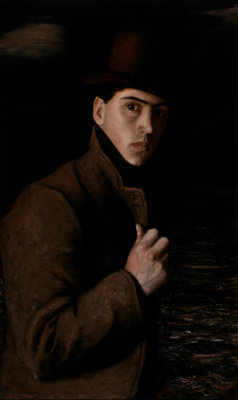It’s All About Me: California Artists’ Self-Portraits
At the Santa Barbara Museum of Art. Shows through August 17.

The history of self-portraiture is about as old as the history of art itself, primarily because the self as subject is always available and often irresistible to the artist’s ego. In the context of portraiture, self-portraits are particularly revealing; they not only mark time in a historical context, but they offer us insights into the cultural, political, and social climate in which the artist was working. SBMA’s It’s All About Me: California Artists’ Self-Portraits is comprised of 14 modern self-portrait paintings and photographs from the museum’s permanent collection.
Because in the modern era artists represented a bohemian ideology, they often portrayed themselves as cultural iconoclasts and leaders in breaking with tradition. In a nod to this subculture movement, the exhibition begins with a striking, sepia-toned self-portrait by photographer Mary de Latour from 1935. The subject is pictured reclining on a couch while casually lighting a pipe in a blatant act of pre-feminist audacity. This simple gesture is at once exotic and empowering, as de Latour both references and flaunts the conventional femininity of her era.

Santa Barbara artist Clarence Hinkle traces the progression of time with two self-portraits. The first, painted in 1900-01, features the artist as a confident young man, his bowler hat perched cockily on his head. Next to it hangs a self-portrait dated 60 years later, in which the same figure is re-appropriated and juxtaposed with his now older self. Stylistically, the second portrait is painted with looser, expressive brushstrokes that are more forgiving than the exacting realism of the earlier work. The contrast marks a progression in artistic evolution as an old man looks back on his past-both as a man and as an artist.
Although many of the pieces in the show are specific to their moment of creation, the self-portrait as a genre acts as a powerful common denominator, linking each of the faces to the next in a blur of humanity that transcends time and place. The self-referential gaze holds secret hopes, dreams, and disappointments that characterize us all, and link us inexorably to the past.



